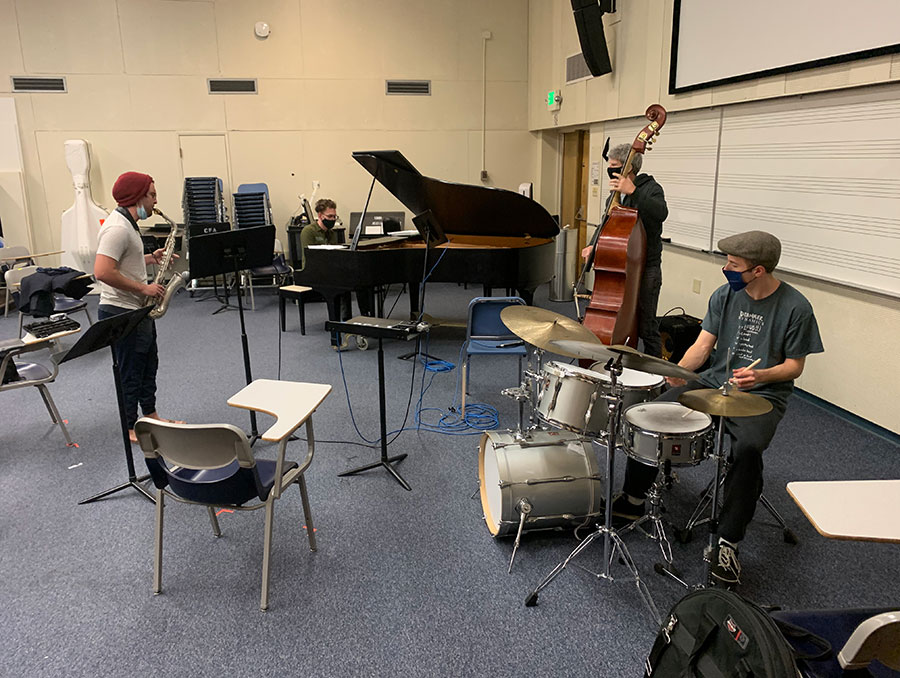By: Tianna Morimoto
It’s a Tuesday and A.B. Gorham, Director of the Black Rock Press, is preparing to start her Art 320 Letterpress Printing class. Instead of being on campus in the large Black Rock Press studio utilizing the provided equipment, Gorham logs onto her computer and opens her scheduled Zoom meeting for the day. Her students soon join this virtual class, and Gorham pulls up a digital scan or photo of a print they created at home with their mini and portable letterpress machines. Together they go over the pieces communicating through the computer screens in their separate remote locations.
“There was a small part of me that really wished that we could have stayed in the classroom – that wanted to, but at no point was I willing to risk anyone's health, even though I feel what they learned in this space was so important and powerful for them,” Gorham said, who switched from Hi-Flex to fully remote learning during the sixth week of the semester.
This semester at the University of Nevada, Reno was unlike any other. As the COVID-19 pandemic continued to spread throughout the United States, many universities went virtual or masked up for socially distanced in-person classes. While instructors modified their syllabi and lesson plans, School of the Arts professors in particular were challenged with adapting their classes to a new platform of learning in a field where teaching is reliant on in-person and real-time performance, practice and critique.
Gorham’s class started in-person, but switched to online due to the increasing coronavirus cases. This change meant her students could no longer use the Vandercook printing press in the Black Rock Press for their projects.
“Letterpress is such a unique class in the way that it is very dependent upon equipment to letterpress print. The whole point is that you're on these machines,” Gorham said.
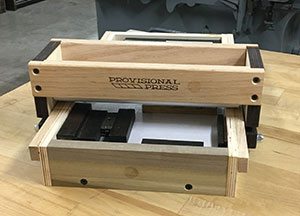
As a way to adapt to this situation, Gorham purchased portable letterpress machines (Provisional Press kits) for her students. These machines are made out of plywood, a few metal pieces and bearings. Gorham’s 12 students assembled the machine at home and now use it to fulfill their assignments and create printed art pieces.
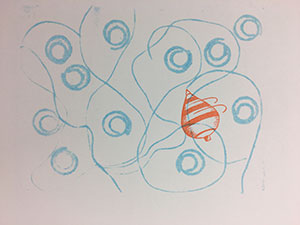
Although work on the portable presses cannot compare to what the Black Rock Press can produce, Gorham said she thinks of these new machines as ‘a new beast’ allowing her more experimentation and freedom as an educator.
“Once I sort of let go of the idea that I was trying to translate that version of a letterpress class into a home, and that it was more about figuring out what letterpress means in a home environment and what are the elements that we can carry on with – that sort of freed everything up for me. I think it made it better for the students too,” Gorham said, who added this time allowed her to think of her classes and instruction in a different way, and possibly use remote learning and cater assignments to an at-home environment in the future.
Other faculty and staff within the School of the Arts have also found ways to persevere through challenges and create a positive learning environment for students.
The Department of Theatre and Dance found a creative way to continue to hold in-person classes while maintaining a safe social distance through six-feet dance boxes which were measured before the start of the semester in the studios. The six-feet distance also meant limiting class size, and setting a rotating schedule in order for students to get the most studio time as possible.
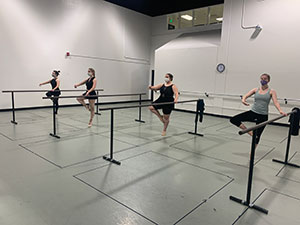
“The differences between teaching now and before the pandemic really aren’t too much,” Eve Allen-Garza, teaching assistant professor of dance said. “We have our own little protocols of where you put your stuff to spread out as well. I give a lot more water breaks to have a second to catch breath. As far as the space goes, the students are pretty much in their boxes. We still rotate the lines in a safe way.”
This semester, Allen-Garza taught beginning, intermediate and advanced ballet technique and dance history as Hi-Flex classes.
Besides having to dance in face masks, Allen-Garza adjusted the content in her ballet class to limit traveling and focused more on vertical movement through the use of the barre. She also had to alter her teaching style and technique as a dance instructor.
“As a dance instructor, usually, I can touch your elbow – provide tactile feedback – and in this case, I just have to touch my own. I say, ‘this is you, do this’ and hopefully interpret that,” Allen-Garza said. “I normally would go up in class and touch you and fix your placement, but we can’t do that.”
Despite the changes and circumstances, positive feedback was received from the dancers as they appreciated the opportunity to still perform in person.
“Our dancers feel so fortunate that we’ve been able to provide such a safe learning environment and still meet in person that they aren’t willing to take risks to mess that up for other students. When we finally got into the classroom, I wasn’t worried anymore,” Allen-Garza said.
The Department of Music also endured some modifications to classroom operations. This semester, full-time Lecturer Hans Halt, taught private lessons, an arranging class, a combo class and a keyboard class – all of which were through different modes of instruction. His private lessons and small combo class met in person where everyone wore masks, socially distanced and played their instruments together.
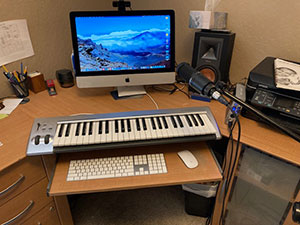
Halt’s keyboard class was fully remote as the space the class normally takes place in was too small for the number of students and their keyboards to socially distance. Fortunately, all of his students had their own keyboards at home and Halt was able to position his web camera during the class’ Zoom sessions so students were able to see a full view of his keyboard and have a visual of him playing – something they never got to have while in person.
Since the University was already remote halfway through the spring semester, Halt said he felt pretty confident going into the fall semester.
“I was more concerned with just keeping the students' morale up,” Halt said. “I think most students are doing pretty well and it's this fine line because you don't want to be too lenient. I think it's really important for students to have these deadlines and to keep them busy because it takes their mind off all this stuff.”
However, like many, Halt dealt with the technological challenges of holding music and performance-based classes via Zoom. He also had to think creatively on how to keep students’ attention online during live lectures.
“I had to do some research on how to be better at keeping people engaged. I read some good articles on discussion groups,” Halt said.
“The discussions can be not so great if you ask them one question and everyone answers the same question. I learned that if you ask ‘please find two quotes that surprised, interested, or annoyed you and explain why,’ then you have to respond to these by expressing approval or disapproval.”
“There's certain things you can do to just make the experience a little more realistic,” Halt said.
Through all of the challenges and changes from this semester, the future remains uncertain. While the world continues to adjust to a new norm of face masks, social distancing and online learning, School of the Arts professors continue to do the best they can to provide a meaningful and positive education for their students.
“I'm trying everything that I can to give my students an education that they can take with them,” Gorham said. “Even if they don't have this equipment later on in life or they never letter press print again, that there's something, some idea, some concept, even maybe of a technique that they can take on with them into the rest of their lives.”
